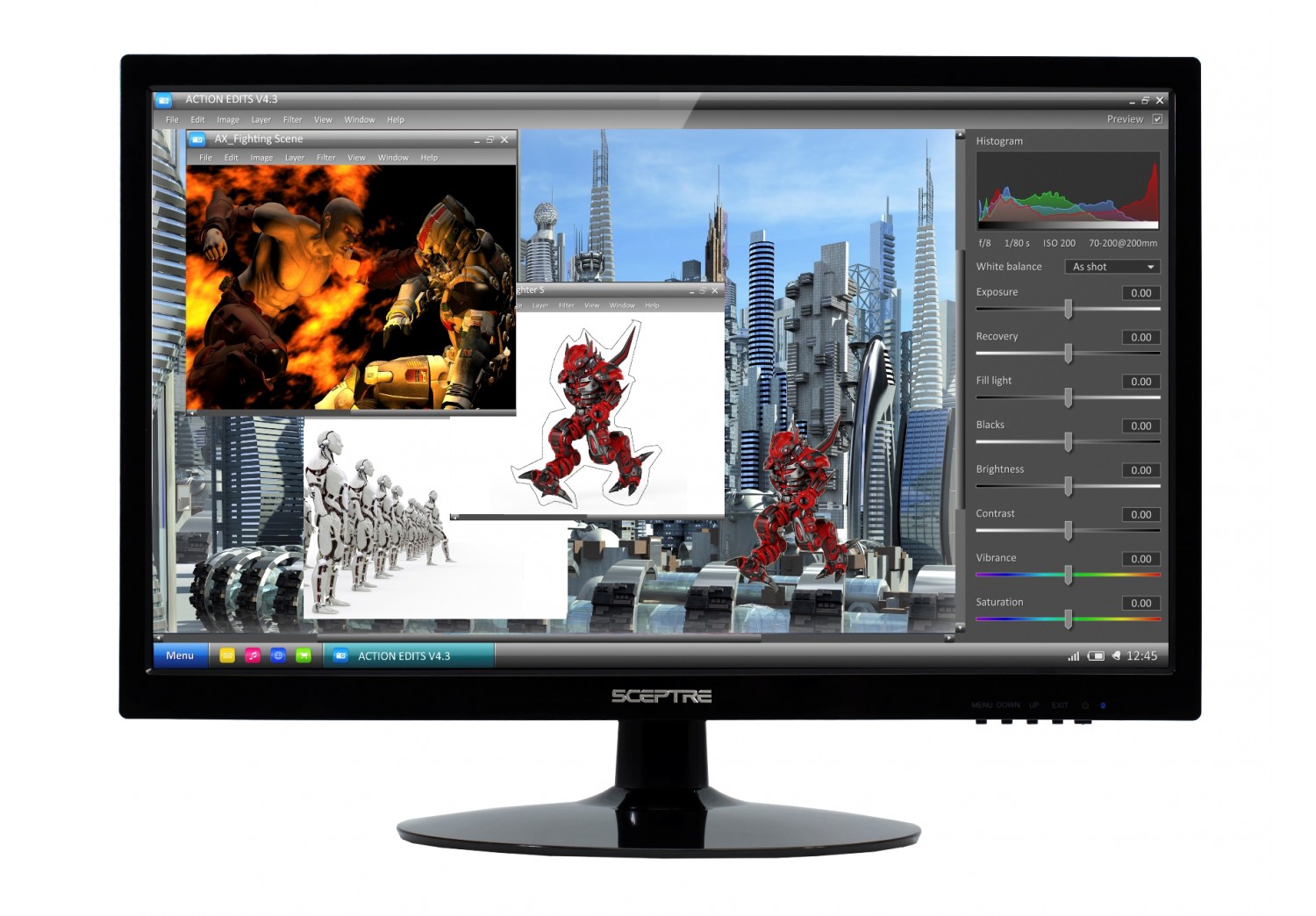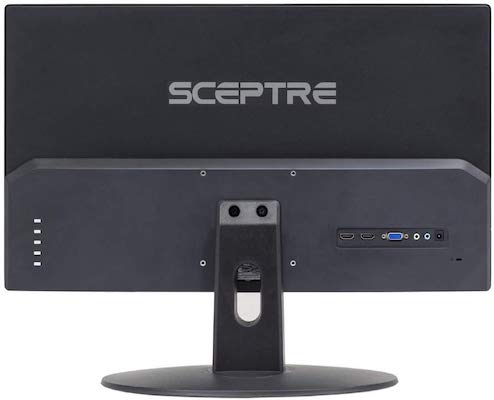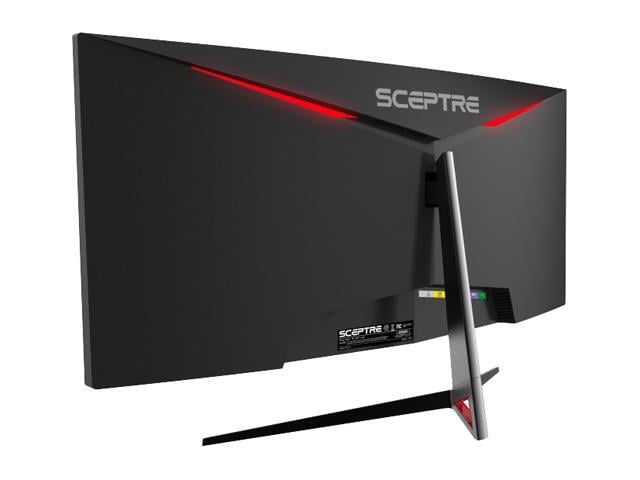Many people today use a second computer screen for several reasons. Connecting a second monitor is useful if, for example, you want to improve performance or gameplay. Using a larger area of the screen also makes the work or entertainment in the system more convenient. and efficient – overall multitasking becomes easier, as does general computing capabilities.
Windows 10 Sceptre monitors are fully compatible with Windows 10, the most recent operating system available on PCs. Tilt With the ability to tilt 15 degrees. Update Generic PnP Monitor Driver. The most helpful method which has worked for a number of. To roll back the driver: In the search box on the taskbar, enter device manager. Select Device Manager from the list to open it. Then, select the arrow to expand the Display adapters section. Right-click your display adapter and select Properties and the Driver tab, and then select Roll Back Driver. If you don't see a roll back option.
Having a second monitor connected to your computer looks like an additional and useful workspace when you need to keep track of spreadsheets, and both are visible at the same time. If you are a gamer, multiple screens can expand your game world. They can also be useful if you want to edit a task on one monitor while watching, such as videos on the other. You can also quickly switch between applications. Instead of using keyboard shortcuts such as Alt + Tab, you can simply hover your mouse over another monitor.
- Downloads Software and driver updates. 2-Way Active Studio Monitors with EBM Wave Guide. 6.5-inch CoActual® 2-way Studio Monitors.
- Downloads 1 Drivers for Sceptre H40 Monitors. Here's where you can downloads the newest software for your H40.
Despite these advantages, problems with additional monitors can be frustrating, especially if you use multiple displays as part of your normal computing activities. This can degrade performance or affect gameplay. If you have problems with a second monitor, this article is a good place to find solutions.
Some Windows users report that a second monitor was not recognized after a Windows update, a second monitor was recognized but not displayed, or the dual monitor is not working with Windows 10.
These issues, often caused by outdated graphics drivers and installing the latest display / graphics driver, can be resolved if Windows 10 does not recognize the second monitor.
Change the Project Mode
Incorrect project mode may also mean that a second monitor cannot be detected automatically.
- Press the Windows + P key. A small column with different types of project modes will be displayed.
- Select a duplicate if you want the same content to be displayed on both monitors.
- Select Expand if you want to expand your workspace.
Rollback to an older driver
Sometimes these problems can be caused by new drivers not working properly with Windows 10.
If this is your case, you can go back to an older driver version. How to Restore a Driver on:
- Go to Device Manager and find the display driver.
- Right-click it and select “Roll Back Driver”.
- Follow the instructions.
Define monitor settings manually
If your operating system cannot detect another monitor, right-click “Start”, select “Run” and enter desktop.cpl in the “Run” field and press “Enter” to open the display settings. Normally, the second monitor should be detected automatically. If not, you can try to detect it manually.
- Click the “Start” button, then click the gear icon to open the Settings application.
- Go to “System” and click “Detect” on the “Display” tab in the “Multiple Displays” column. This button helps your operating system recognize other monitors or displays, especially if they are older. Here you can also connect to a wireless display.
Also, make sure that the panel below is set to develop these ads.
Troubleshooting hardware
- Try replacing the HDMI cable connecting the second monitor. If it works, we know that the previous cable was faulty.
- Try using a second monitor with a different system. This will help determine if the problem is with the monitor or the primary system.
- Start the hardware and device troubleshooter and check.
Reinstall the graphics driver
To reinstall the graphics card driver, which may be damaged or cannot work properly:
- Open Start.
- Find Device Manager and click on the highest result to open the application.
- Double-click to expand the Graphic Maps branch.
- Right-click on the adapter and select “Remove device”.
- Uncheck the Uninstall software driver for this device box.
- Click the Uninstall button.
- Reboot your computer.
- Open Device Manager again.
- Right-click the computer name and select Scan for hardware changes.
After you complete the above steps, Windows 10 will try to automatically reinstall the graphics driver at startup. However, it is recommended that you follow these steps to ensure that the driver is installed correctly.
Windows 10 does have a number of new features, but we can’t ignore the issues. Many people are facing problems in Windows 10 from the first day. Right after upgrading to Windows 10, hardware drivers cause most of the problems.
The latest in the line of Windows 10 issues is Generic PnP Monitor issue. Many people have complained that after upgrading their computer to Windows 10, their monitor is not being recognized by Windows.
Clearly, this is a driver issue. But, it can be related to hardware or cable problems as well. If you are also facing this issue, there’s nothing to worry. We will help you fix this problem using our methods. Simply follow and perform the methods, one by one, until the issue is fixed.
PnP means plug and play. When you plug a PnP hardware, it starts working without having to install any driver. When you see a generic PnP monitor on the device manager, it means the Windows was unable to recognize the device.
When this happens, Windows installs a generic monitor driver for it. This does not always work out for the monitor, as the driver could not be functional with the hardware. This leads to monitor issues.
Follow the methods to fix the problem.
Fix 1 – Update Generic PnP Monitor Driver
The most helpful method which has worked for a number of users is updating the driver. There’s a good chance that the problem is being caused by the driver. So, in this method, we will update the monitor’s driver. Follow the steps to do so.
Step 1. Right-click on the Start menu button and select Device Manager.
Step 2. When the Device Manager window opens, expand the Monitors option. In the expanded menu of Monitors, right click on Generic PnP Monitor. Select the Update Driver option from the right-click menu that opens.
Step 3. After the last step, a dialog box will open up. Here, select the first option, Search automatically for updated driver software. This will download and install the driver automatically from the Internet.
Step 4. When the driver is installed, restart your computer. If Windows was unable to find and install the driver, follow the next step.
Step 5. Go back to step 3 and this time select Browse my computer for driver software.
Step 6. Now, select Let me pick from a list of device drivers on my computer.

Step 7. Mark the box beside Show compatible hardware to view the compatible devices.
Here, select any other compatible device other than Generic PNP monitor from the list and then install it.
Step 8. After installing the driver, restart your computer.
This should fix the issue. If the problem still persists, follow the next method.
Fix 2 – Update Display Card Driver

Many times the problem is with the graphics card driver, which causes monitor issues. So, in this method, we will update the graphics card driver. Follow the steps to perform this method.
Step 1. Right-click on the Start menu button and select Device Manager.
Step 2. When the Device Manager window opens, expand the Display Adapters option. In the expanded menu of Display Adapters, right click on your graphics card. Select Update Driver option from the right-click menu that opens.
Step 3. After the last step, a dialog box will open up. Here, select the first option, Search automatically for updated driver software. This will download and install the driver automatically from the Internet.
Step 4. When the driver is installed, restart your computer.

If your computer has integrated graphics card, repeat this method for the other graphics card as well.
If Windows isn’t able to find updated driver software on the internet, then go to your computers’ manufacturer’s website or the graphics cards’ manufacturer’s website. Download the latest driver from there and install it.
This should solve the issue. If you are still facing the problem, follow the next method.
Fix 3 – Uninstall Generic PnP Monitor Driver
Sometimes, rolling back the driver helps with monitor issues. So, in this method, we will uninstall the generic PnP monitor’s driver. Don’t worry, Windows will recognize it as new hardware and it will automatically install the drivers for it. Follow the steps to perform this method.
Step 1. Right-click on the Start menu button and select Device Manager.
Step 2. When the Device Manager window opens, expand the Monitors option. In the expanded menu of Monitors, right click on Generic PnP Monitor. Select Uninstall device option from the right-click menu that opens.

Step 3. When asked for confirmation, select Uninstall.
Step 4. Now, click on Scan for hardware changes.
After the last step, Windows will recognize and install the monitor as the real monitor and not the generic PnP monitor.
If it didn’t help and you are still facing issues, follow the next method.
Fix 4 – Run the System File Checker
System File Checker in Windows works as an automatic troubleshooter. It scans for corrupt system files and problematic drivers, and then restores/repairs them. Follow the steps to perform this method.
Step 1. Go to Cortana and type Command prompt. Right-click on Command Prompt from results and select Run as administrator.
Step 2. In the Command Prompt window, type the following command and press Enter.
Step 3. Wait for the SFC to scan and fix the issues. This could take up to 15 minutes, so be patient.
When the process is done, the problem must be fixed by now.
If this method didn’t work for you, try the next one.
Fix 5 – Check for Windows Updates
Microsoft releases Windows Updates from time to time, which fixes a number of bugs and errors in Windows 10. So, go to Settings and Check for updates. If there are any pending updates, download and install them. It could fix your issue.
Fix 6 – Reconnect Monitor
If you are using a desktop, this method could help you. Follow the steps to perform this method.
Step 1. Turn off your computer and the monitor.
Step 2. Now, you have to remove the power cord of monitor. Don’t connect it back for at least 10 minutes.
Step 3. Unplug the video cable from the CPU and wait for 5 minutes.
Step 4. Now, plug the video cable to the CPU and power cord of monitor.
Step 5. Restart the computer.
This should solve the problem.
We hope we were able to help you fix this problem. If any other method worked for you, or if you have any questions regarding this issue, please mention them below in comments.
Sceptre Monitor Drivers F24
Related Posts:
